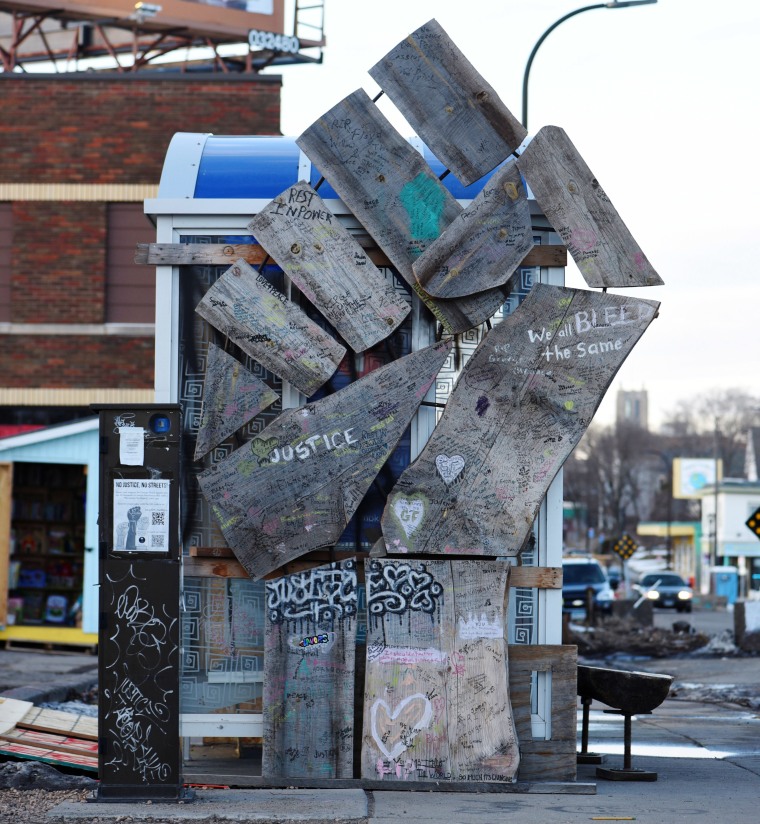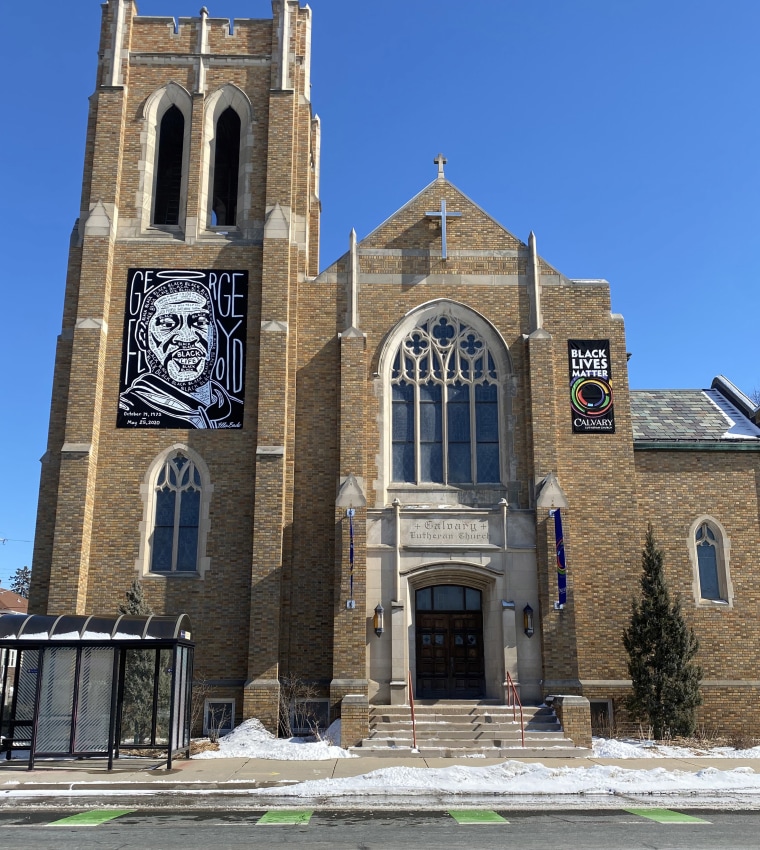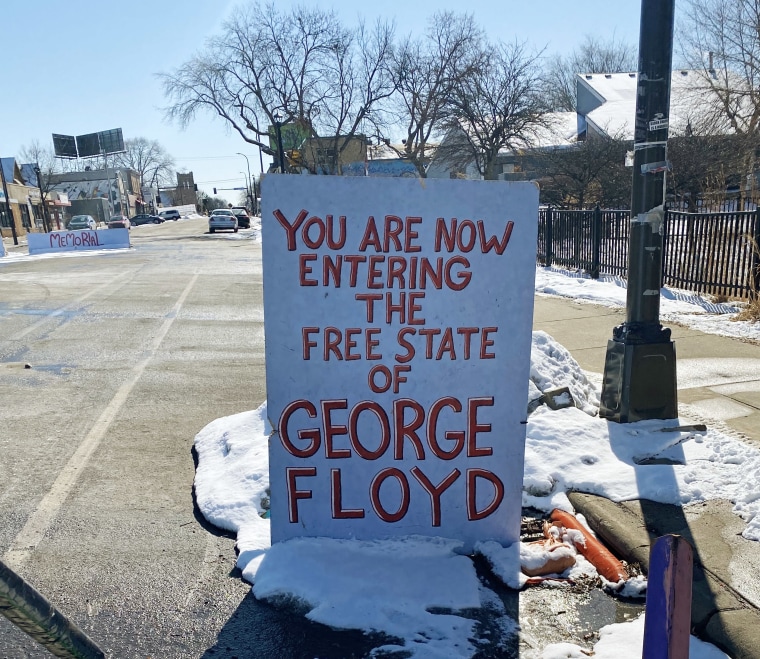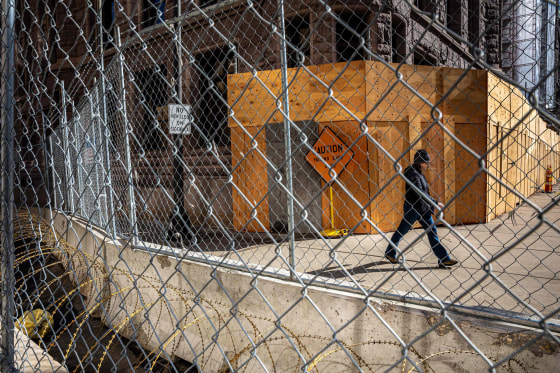MINNEAPOLIS — There’s the fenced-off government buildings downtown.
Cars parked in the middle of the street where residents stand watch over George Floyd’s memorial on the city's south side.
Parts of east and north Minneapolis appear at times quiet and tense. Some businesses have boarded up or shut down.
Nearly a year of peaceful protests, riots and international outcry has led to this, a city on edge and on the cusp of what the mayor, Jacob Frey, calls "probably the most significant trial that our city has ever experienced.”
Jury selection starts Monday in the trial of a former Minneapolis police officer, Derek Chauvin, who is charged with murder in Floyd's death last May.
For many, the court case has been a long time coming. In interviews over the last few days, residents offer differing opinions of how they feel heading into the trial.
Still, it’s hard to find anyone in town who hasn’t spoken about the trial at least once.
“I’m worried that he’s going to get off free and riots starting back up,” one resident, Preston McDade-Davis, 35, said.
The city is calm but getting tense, and everything hinges on the verdict, said Rayford Dixon, 59, a barber.
“Anything under a 10-year sentence will cause Minneapolis to go into an uproar,” Dixon said. “They’re going to have a problem because they know he’ll be out in no time (with good behavior).”
He added that a 15-year sentence should satisfy the public.
Frey said in an interview that the city has exemplified a deep sense of pride over the past 10 months, exuding an unbridled love while enduring the weight of this moment, which leans heavy on Black and brown people.
“People are processing trauma in different ways,” said John Elder, public information officer for the Minneapolis Police Department. “We’re seeing people realize that kindness is important."
Floyd, a Black man, died in police custody on May 25 after Chauvin, a white 19-year veteran of the department, kneeled on his neck for several minutes as Floyd repeatedly said, “I can’t breathe.”

Chauvin faces second-degree murder and manslaughter charges. Three other former officers are scheduled to go on trial in August.
Floyd’s death sparked national and international protests, and the precinct where Chauvin worked was set ablaze.
Authorities say they’re preparing for whatever ruling is rendered, including instituting Operation Safety Net, a task force assigned with coordinating safety and security measures during the trial.
About a dozen law enforcement and health agencies, such as the FBI, Minnesota state patrol, St. Paul Police Department and the Minnesota National Guard, are included in the plans.
The city of Minneapolis and Hennepin County plan to spend at least $1 million to install fences and other barricades during the trial, officials for the city and county said. As part of that total, the city expects to spend $515,000 to fortify Minneapolis' five police precinct stations.
“We had a great deal of civil unrest last year, and it was a level of violence and unrest that this city has never seen,” Elder said. “In law enforcement, you plan for the worst and hope for the best. We owe it to the residents, businesses and visitors to have a plan in place.”
Police officials say the city hasn’t healed from the Floyd killing.
“Absolutely not. There’s still a lot of raw emotion and trauma that people are experiencing,” Elder said, acknowledging the protests and pandemic contributed to an increase in crime, noting that homicides rose from 48 in 2019 to 84 last year.
Worried about potential structural damage, Minneapolis business owners appear split on remaining open or shutting down.
“We could see something very similar to what happened last May,” Jonathan Weinhagen, president of the Minneapolis Regional Chamber, said.
Some business owners never did remove the wooden boards from their storefronts, and others are willing to stay open to project a level of confidence in Minneapolis, business officials said.
“It’s a little bit of a case by case, but everyone is proceeding with caution,” said Weinhagen, adding that the chamber will soon start providing routine guidance to help businesses along the way during the trial.
Many living across the bridge in St. Paul haven’t been able to escape the trial's magnitude and what’s to come for the Twin Cities area.
Everyday, Kasim AbdurRazzaq, 41, wakes up with a heightened sense of alertness, concerned for himself and family.
No matter the verdict, there will be a heavier police presence in Black communities, said the father of three, who lives in St. Paul, and works and attends mosque in Minneapolis.
“The community is hurting and in pain, and as a Black man I have to think about how police have responded to people being upset and vocalizing that,” AbdurRazzaq said. “It puts a lot of worry on my heart and on my mind.”
Because of the city-wide tension, he fears for his 14-year-old son, who often takes the five-minute train from their house to the YMCA.

City officials say the trial will help define where the country stands.
“This trial is more than just about Derek Chauvin. It is about policing and public safety and how fundamentally flawed it is in the United States,” Minneapolis City Councilman Phillipe Cunningham said.
The councilman represents the north side, where the majority of Black residents live.
“We know that this trial is going to reignite the same kind of emotional and social response that we saw last summer,” the councilman said.
Last year wasn’t great for his district, which he said was “terrorized” by white supremacists during the uprisings.
“A lot of north siders are worried about a potential protection gap again,” Cunningham said, referring to a slow police response to the destruction caused by outside infiltrators.
“We don’t have a whole lot over here, so we have to be able to protect that,” he said.
Frey said there will be zero tolerance for white supremacists or any other outside agitators who want to come into town and cause chaos or disrupt peaceful protests during the trial or after the verdict.
“They are going to be arrested,” the mayor said.
Floyd was killed in South Minneapolis, on Chicago Avenue. Concrete barriers and a steel bike rack on wheels blocked entrances to 37th and 39th streets leading to the Floyd memorial one afternoon this week.
At the south end, a white sign with red lettering reads: “You are now entering the free state of George Floyd.”
At the north entrance, volunteers guard the barriers, which have been spray-painted with “Black Lives Matter” and other pro-Black expressions.
An assortment of fresh colorful flowers, a raised Pan-African flag and a portrait of Ahmaud Arbery, a Black man who was gunned down last year while jogging in Georgia after being chased by two white men, decorate Floyd’s memorial at 38th Street.

Between these two blocks, the usual faces who live here sporadically park their cars in the middle of the road, standing guard and on the lookout for unfamiliar faces.
Frey said the city has blocked vehicle traffic, allowing a space to which all are welcome to memorialize Floyd.
Walking the blocks, however, tell a different, somewhat unwelcoming story.
Marijuana smoke fills the cold, sunny air. Traffic signals are shut off. Sidewalks are eerily quiet. And the occupants of those parked cars roll down their windows to stare at and cross-examine strangers.
Black residents and a few white volunteers enforce this gritty neighborhood, taking it upon themselves to preserve and protect the monument and Floyd’s legacy.
“No outsiders allowed,” McDade-Davis said. “On one hand, residents stood up for themselves and banded together by blocking off access to a memorial dedicated to Floyd’s legacy. However, the neighborhood has become ripe for stickups.”
For better and worse, the neighborhood has spiraled in opposite directions, said McDade-Davis, who lives five blocks from where Floyd was killed.
The two blocks in part symbolize present-day Minneapolis — a tough and loving city nearing what could be "the most significant trial" it has ever seen.
